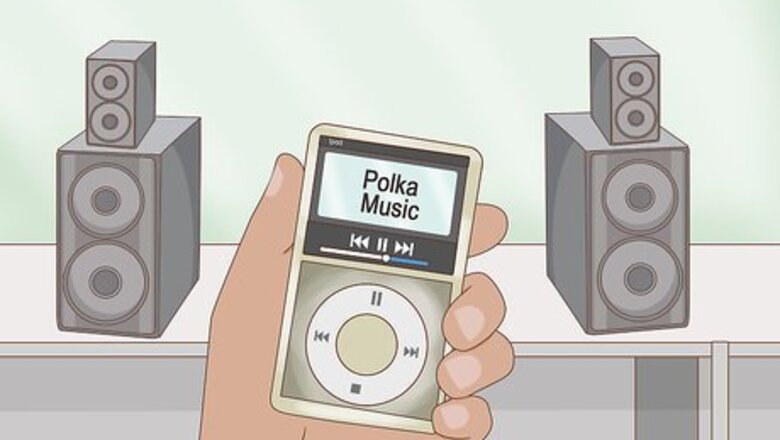
views
- For traditional polka dancing, start in the classic ballroom position with the lead’s left hand holding the follower’s right, and lead’s right hand on the follower’s back.
- The basic leading steps are as follows: left foot forward, right foot forward, left foot forward again, right foot forward past the left, meet your feet together.
- The follower’s steps are identical to the leads, except the feet are reversed.
- Incorporate side steps, turns, promenade poses, and hops to keep your dance fresh and interesting.
The Basic Steps
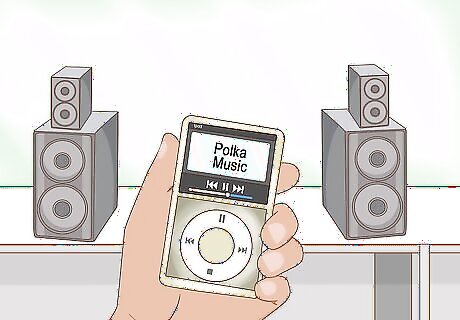
Throw on some polka music. Jimmy Sturr, Walter Ostanek and his band, and the Brave Combo are three names to try on your ears, but any good Internet radio site will have a polka station that is bound to bring up some catchy beats. Alternatively, most country music has a good beat for polka, too. The accordion is only recommended, not necessary.
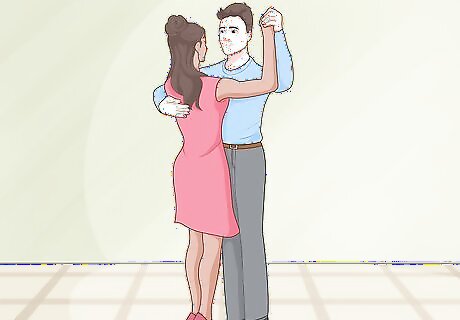
Hold your partner in a classic ballroom position. The man's left hand and lady's right hand should be extended out at an angle so that the hands are at the same height as the lady's shoulders. Both partners should be parallel to each other, but slightly offset to their own left. The man's right hand should then go on the lady's left shoulder blade and the lady's left hand should rest lightly on the man's shoulder. You should feel a solid connection, neither too delicate nor too heavy. This is the position you will maintain for the entirety of the dance. Make sure to always keep your back straight and your clasped hands strong. The polka is confident and carefree and your stance should reflect that.
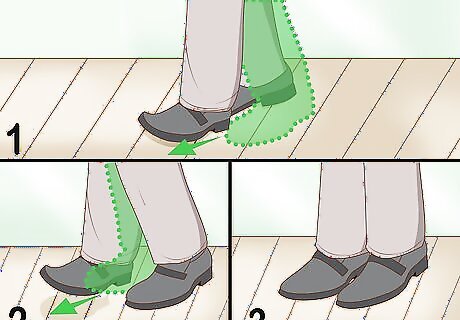
Learn the lead's steps. There are few dances that can be as basic as the polka. Bare bones, it's just three steps: right, left, right. Then you repeat it on the other side: left, right, left. That's it! Here's the basics: Step forward with your left foot Meet your left foot with your right Go forward with the left foot again Step forward with the right foot (passing the left foot) Meet your right foot with your left Step forward with your right foot again. Voila! Think of it as full step, half step, half step. Full step, half step, half step. That first step is longer, followed by two shorter steps.
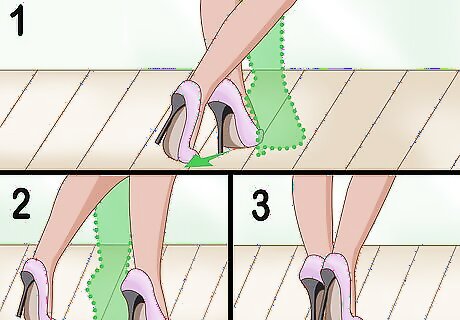
Learn the follower's steps. The lady's steps are the same as the man's, but starting with the right foot going backwards: back, together, back. Back, together, back. Here's a few more details: Step back with your right foot Meet your right foot with your left Go back with your left foot Step back with your left foot (passing the right foot) Meet your left foot with your right Step back with your left foot again. Boom! Finished. Again, remember that the first step is the largest, followed by two smaller steps. So it's full step, half, half. Full step, half, half.
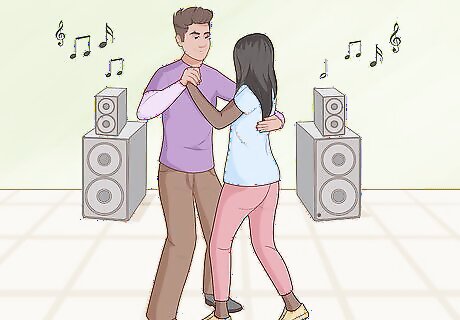
Do the steps in time with the music. Polka music usually has a marching rhythm of 2 beats per measure. Right, left, right matches 1 and 2. Left, right, left matches 3 and 4. That is, you should be taking three steps for every two beats. If you don't have any polka music, most country standards will suffice. Polka is about having fun. Imagine those Eastern Europeans in their beer halls having the time of their lives doing it and let loose! Add your own flair however the music takes you.
Adding New Steps

Polka to the side. With the same three step movements and holding your partner in the same fashion, trying polkaing to the side. Instead of it being like a step ball-change or a little shuffle, it'll probably look more like a skip. It can be very bouncy and upbeat. Try going back and forth, in squares, and front and back again. Don't change the alignment of your body. Keep your feet facing your partner and just move them right or left. Your back stays straight, your arms stay up, and you let your legs do the work.
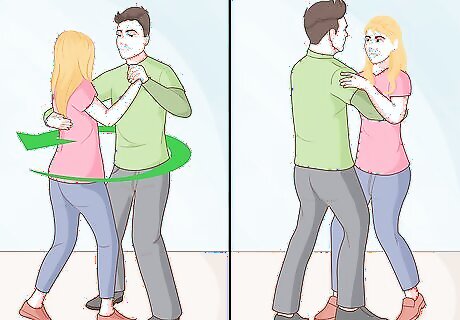
Start turning. Why? Because it's time to get fancy. You've got the polka down from front to back and from side to side -- and not it's time to start turning. The lead will determine whether the couple turns right or left and both are the same idea: Start with a basic polka. After a measure or two, the lead should starting turning forward and to his 2 o' clock on his left, right, left, and then turn back (toward his 7 o'clock) on his right, left, right. That's a right turn basic; the left is just turning the opposite way. A full 360-degree turn should be completed in 4 counts. Try doing several in a row! If you're polkaing to the side, take 2 counts to do a 180-degree turn, flipping around, now facing the other direction. If you're leading, you can whip your partner around and around and around. Just don't get too dizzy!
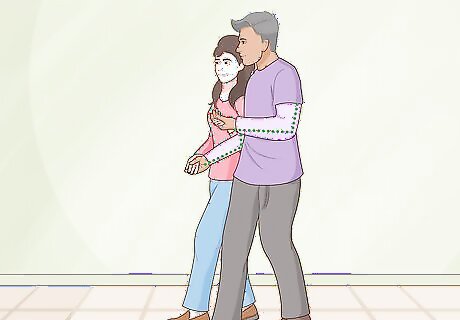
Do it in promenade pose. That's fancy terminology for opening up your stance. Instead of holding your partner in front of you, you should each take your foot closest to your clasped hands and rotate 90-degrees. Your hands and torso stay in the same position, but your feet are facing forward. If that was at all confusing, think of the tango. The two parties are facing each other, torsos held high, but their legs are moving to the side, driving them forward. It's similar -- but with fewer roses and dips.
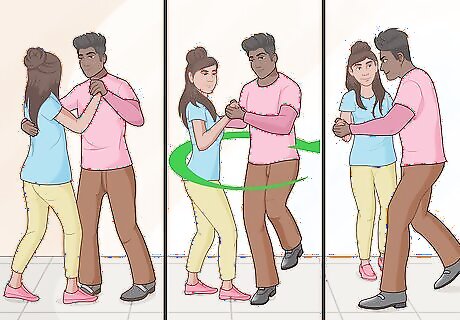
Add some hops. If you're doing the polka in promenade pose, your legs are open and able to do some hopping! If not, your partner is in front of you -- hopping would just end up in your two bumping knees. So take advantage of that open pose and bring your knees a bit higher on each step -- and highest on the first full step of each cycle -- beats 1 and 3, namely. You know those high knees your gym teacher made you do? It's really just like that, only voluntary. For beats 1 and 3, just add a little pep to your step. It can be a lot more fun when you get into it!
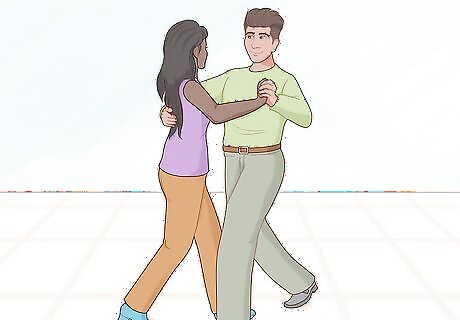
Switch legs. Again in promenade pose, you can sometimes switch it up by using different legs. Since they're open, you and your partner can start on outside legs, start on inside legs, or start on opposite legs. It can create an interesting mirroring effect that isn't seen otherwise. Just for clarity's sake, this is only in promenade pose. Using the same leg when your facing your partner will end up in you two playing a dancing game of bumper cars.




















Comments
0 comment